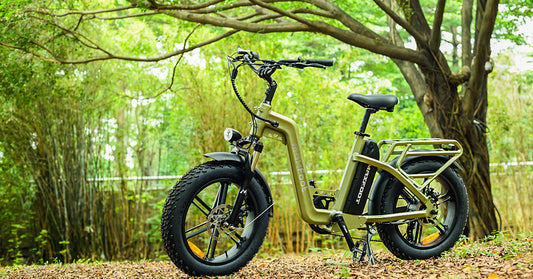Electric bikes, powered by efficient electrical motors, are becoming the future of sustainable transportation. Their promise of significant savings compared to traditional fueled vehicles has piqued the interest of many. Yet, a pressing question lingers: What’s the annual cost of charging these green machines?
Here’s a tidbit: The yearly expense of juicing up an e-bike is less than the average hourly wage in the US. Surprised?
We stand by these facts and will lay out all the math to support our claims in the subsequent sections of this article. Ready to be enlightened? Let’s embark on this electrifying journey!
Understanding Electric Bike Battery
The key to the price journey starts with understanding the battery. Look around, and you will spot lithium-ion batteries everywhere – from e-bikes to electric cars and even in your pocket, powering your smartphone.
Here’s why they are the go-to choice:
- Power Packed: High energy density means more juice in less space.
- Sleek and Compact: Perfect for on-the-go devices and rides. That slim phone battery? Lithium-ion.
- Quick Boost: Fast charging gets you moving without long waits.
- Built to Last: You can expect several years of use. And E-bike batteries, especially, have 600 to 800 charge cycles.
You might have seen something like this (48V/ 14Ah or 500Wh) written on the battery. Do you have an idea what they mean?
The first term is the Voltage, and the second one is Watt-hours or Ampere-hours. Voltage represents the potential difference. In simpler terms, it's similar to the water pressure in a hose. A higher voltage battery provides more power. This is required when the bike has a high-powered motor (1000 W).
The Ampere-hour or Watt-hour metric tells you about the total energy storage capacity of the battery. Think of it as the amount of water a tank can hold. A battery with a higher value will allow for a longer ride before needing a recharge.
Factors Affecting the Eike’s Cost Per Charge
Now, let’s decode the key cost influencers:
Battery Size:
Battery size is all about the Watt-hours. The larger the battery, the more energy it can store, and naturally, the longer it takes to charge. This directly translates to the cost.
Voltage:
Voltage is the driving force behind your e-bike’s performance. A bike with a higher voltage will give you that extra zip and speed on the road. But there's a trade-off. Higher voltage means the battery demands more energy when charging. This can slightly bump up the cost compared to a lower-voltage battery.
Local Electricity Rates:
Just as the price at the gas pump fluctuates depending on where you are, electricity rates can vary from one region to another. If you’re in an area where electricity rates are on the higher side, be prepared to shell out a bit more each time you plug in your e-bike.
Charging Spot:
Choices, choices! You can opt to charge your e-bike at home or use commercial EV charging stations. While home charging is generally more economical, commercial stations, especially rapid chargers, can be pricier. However, they offer the convenience of faster charging, especially if you're on the go.
How to Calculate the Cost to Charge an Electric Bike?
Let’s reveal the secret cost formula. To use that, you will the need value of battery energy in kilowatt-hours, and the cost of an electric unit (cost per kWh).

Electric Bike Cost Per Charge
In this case, we will take the battery values of Maxfoot MF-19. It has a 48V/ 14 Ah Lithium Ion battery. To change Ampere-hours to watt-hours, multiple voltages with it.

In the U.S., the average electricity cost per kWh is 13 cents or $0.13. So, the cost per charge is

Considering that you charge your ebike every single day for a year, the cost accumulates to $31.88. It is still less than the average hourly wage of an employee in the U.S.
Electric Bike Cost Per Kilometer / Miles
Another metric is the cost per kilometer or miles. It’s a function of the e-bike’s range. Taking the same Maxfoot MF-19, whose range is 50 miles on PAS I, we calculate the cost per mile.

Note that these calculations are based on theoretical data, we have considered ideal charging conditions. The charging cost may slightly vary in your case, depending on the charger and the cost of electricity in the locality.
Final Words
Our dive into the cost formula showcases how economical e-biking can be. With a mere 8 cents per charge and a yearly expense that's less than an average hourly wage in the U.S., it is clear that e-bikes are not just eco-friendly but also pocket-friendly.
While our calculations provide a general overview, individual costs might vary based on specific e-bike models, charging habits, and regional electricity rates. However, one thing remains consistent: the undeniable benefits of switching to an electric bike.




